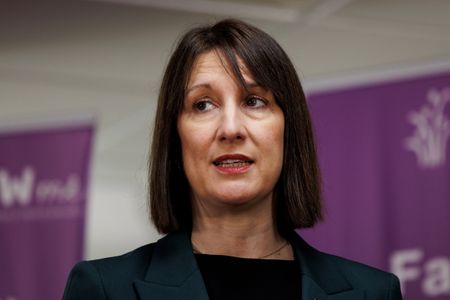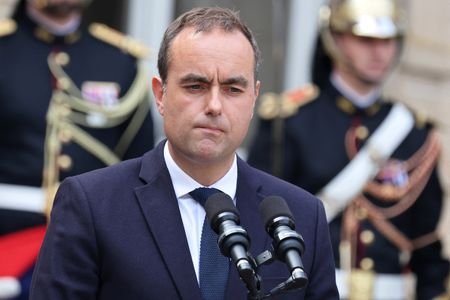By David Milliken
LONDON (Reuters) -Britain’s long-term government borrowing costs hit their highest since 1998 on Tuesday, adding to the problems facing finance minister Rachel Reeves who plans to borrow hundreds of billions of pounds to fund higher public investment and spending.
Long-term borrowing costs around the world have risen following the COVID-19 pandemic and Russia’s full-scale invasion of Ukraine in February 2022, which caused inflation to surge.
However, British yields have risen further in recent weeks as most investors expect the Bank of England to cut interest rates by only about half a percentage point this year with inflation likely to hover above the central bank’s 2% target.
The United Kingdom Debt Management Office sold 2.25 billion pounds ($2.8 billion) of benchmark 30-year gilts to investors at an average yield of 5.198% at an auction on Tuesday. This was the highest yield for a 30-year gilt since the DMO sold one at 5.790% at its first auction in May 1998.
Two-year gilts – which are more sensitive to short-run expectations for BoE interest rates – sold for higher yields in 2023.
The 30-year yield peaked at 5.246% in late London trade, the highest since August 1998 and more than 6 basis points higher on the day.
Ten-year gilt yields hit their highest since October 2023 at 4.684% on Tuesday after stronger-than-expected U.S. services and job openings data.
Expectations of U.S. tax cuts and higher spending when Donald Trump becomes president, as well as potential inflation from new trade tariffs, have also pushed up U.S. yields with a knock-on impact for Britain and Germany.
BUDGET RULE CHALLENGE
In the past month British 30-year government bond yields have been over 2.5 percentage points higher than in Germany – a level only exceeded in September 2022 during market turmoil after former prime minister Liz Truss’ “mini budget”.
Thirty-year gilt yields are around 0.3 percentage points higher than yields for U.S. Treasuries, broadly in line with their average over the past two years and in the early 2010s.
Higher borrowing costs are likely to make it harder for Reeves to meet her budget rules and could require her to increase taxes again, having already hit employers with higher social security contribution requirements.
The government’s budget watchdog has estimated a 1 percentage point rise in gilt yields – if permanent – would add 12 billion pounds a year to government borrowing costs by 2029/30.
While that is low relative to overall government spending or the nearly 300 billion pounds of gilts which are due to be issued next year, it would be enough to wipe out the headroom Reeves has to meet her goal for balanced day-to-day finances.
Some analysts said ahead of the auction that gilt yields looked too high.
Aviva Investors said its team had “a preference for gilts on the view that the Bank of England will cut rates more than the market expects in 2025 on a softer inflation outlook and weaker than expected growth”.
J.P. Morgan said 10-year gilt yields looked cheap compared to U.S. Treasuries, given the relative interest rate outlook.
But the U.S. bank said it was reluctant to bet on gilts as this gap might reflect the risk of “uncertainty from fiscal policy and the potential for issuance to remain very elevated over future years against a backdrop of lacklustre growth”.
RBC said it saw little scope for 30-year yields to move higher in the short run as that would hinge on markets further reducing their expectations for BoE rate cuts this year.
“Whilst this move may indeed come later in the year, we don’t see there being enough evidence currently for the market to really pursue such a narrative – particularly ahead of the very significant macro uncertainties which stem from Trump’s upcoming inauguration,” it said.
($1 = 0.7966 pounds)
(Reporting by David Milliken; Editing by William Schomberg, Emelia Sithole-Matarise and Christina Fincher)










